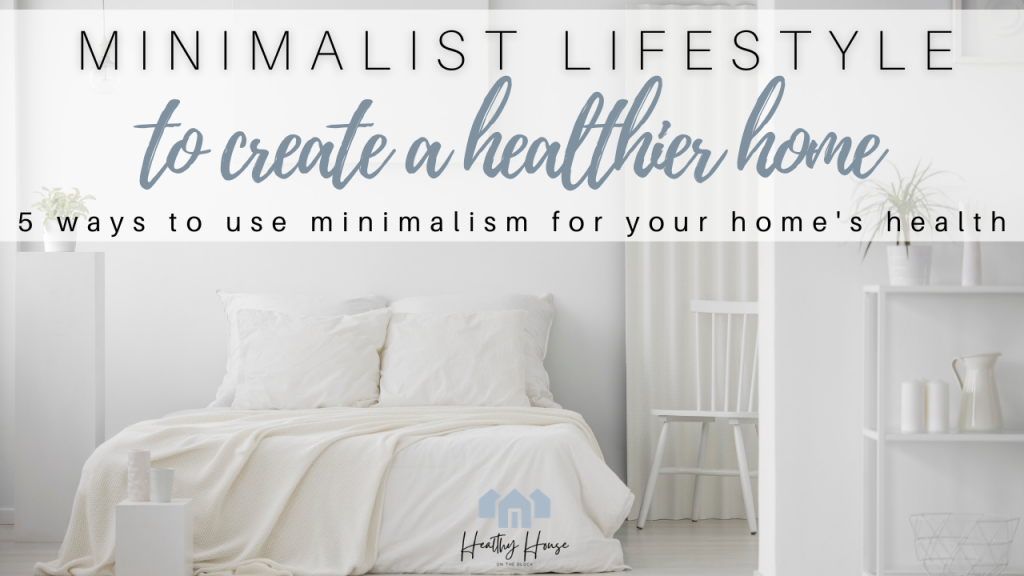
I wouldn’t necessarily categorize myself as a minimalist, per say. But, I do think that a lot of my tendencies at this point in my life lean towards the minimalist lifestyle. As I’ve aged and especially as I’ve had my kids, I see just how important a healthy home is, but I also see just how important simplicity is.
Being able to truly enjoy my family instead of cleaning and managing stuff has been one of the BEST improvements we’ve made as a family. Don’t get me wrong, we still have a long way to go, but limiting the things that come in has helped improve the quality of life in our home.
Not only that, but the minimalist lifestyle can really be connected to a better healthy home. Often times taking on the mindset of fewer things and less we purchase and bring in can lead to introducing fewer toxins to our indoor space.
I think taking the minimalist lifestyle even one step further and making very intentional purchases that are perhaps higher quality in comparison to the “more is better” mentality can be a very positive shift.
Let’s break down how the minimalist lifestyle can support a healthy home with these five easy changes you can adopt in your own home.
FEWER, SIMPLER PRODUCTS
The basis of the minimalist lifestyle and the building block of a healthy home starts with fewer, simpler products. It’s kind of like going back to the basics. Studies have shown that the products we bring into our home not only off-gas VOCs and other toxins into the air, but they also land in our dust around the home.
VOCs are one of the harmful toxins that end up inside our air at home and studies show that these toxins stay in the air for long periods of time, becoming concentrated at dangerous levels. This post talks about VOCs in your home’s air and where they come from. Quite often, they are coming from the products we introduce to our home – cleaning, beauty and personal care products. (SOURCE)
Exposure to products that contain fragrances, VOCs and other harmful chemicals, you’re also increasing your risk for disruption in normal hormone production, reproductive issues, problems with the thyroid and in some cases, cancer. (STUDY)
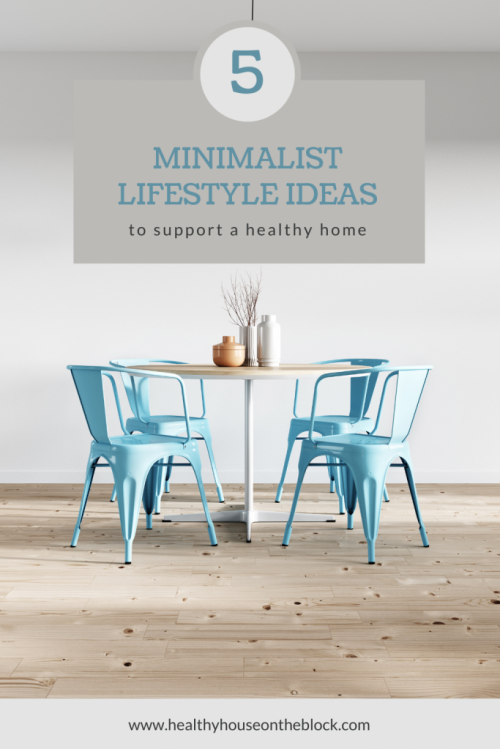
With a minimalist lifestyle approach, you can pair down products and eliminate unnecessary or seldom used products. To me, the minimalist lifestyle is all about simplicity. And simplicity certainly supports a healthy home environment.
It might look like pairing down cleaning products to maybe just one concentrated cleaner that is free of harmful chemicals. Or, maybe you can reduce products you use in your hair to just a handful of clean beauty picks.
Whatever reducing products in your home looks like, it’s a great way to simply and easily take a step in the right direction of a healthy home.
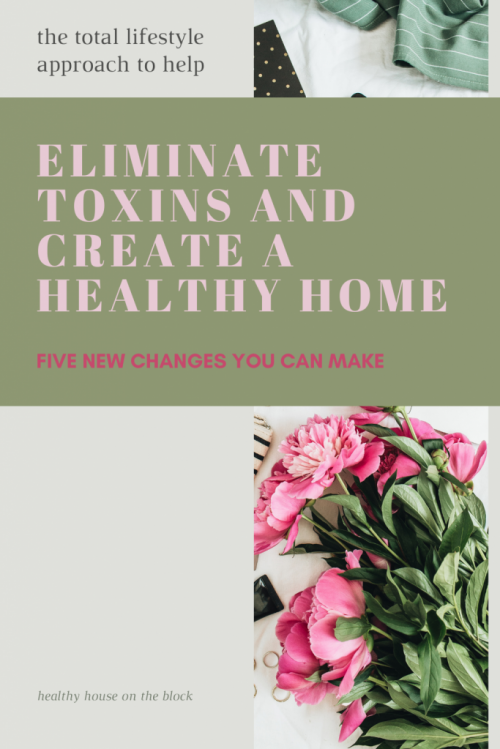
FEWER DUST COLLECTING OBJECTS FOR A HEALTHY HOME
I grew up in the 80s and 90s and I am no stranger to shelves upon shelves of chachkies. As a little girl I had displays of dolls, picture frames and my latest book obsession lining each and every free area of my room. Luckily my style has changed drastically and I now opt for clean lines and clean shelves in most parts of my home. And while I’m still training my kids that less is actually more in terms of style, the minimalist approach to “stuff” at home is actually a healthier option.
One of the best, no cost ways to improve your indoor space is to remove dust from your house. Super fun, right? While dusting and vacuuming on a regular basis are not my idea of a good time, it’s one of those tasks that really improve our indoor spaces drastically and can help reduce toxins in your home.
I’ve talked a lot about the danger in house dust and how it’s negatively affecting our bodies and especially our kids’ bodies. This post talks about your healthy house and how the endocrine system is being affected by the dust we’re exposed to.
House dust is actually made up of not only dead skin cells (yuck), but also contains pesticides, phthalates, flame retardants and other toxins that are harmful to our bodies, air ways and systems.
Dust inside our homes has been linked to reproductive toxicity, endocrine disruption, cognitive and behavioral impairment in children, cancer, asthma, immune dysfunction, and chronic disease. (SOURCE)
When you have fewer objects around your house, there are less areas for dust to collect, leaving your indoor air clean and unaffected.

LESS TECHNOLOGY = FEWER ELECTROMAGNETIC FIELDS
Ah, technology — such a blessing and yet, so often we overuse it. And I’m here raising my hand too — guilty of using WAY too much technology in my house. We’ve added and paired down over the years based on what our needs were at the time. But I will say that getting rid of a few televisions and limiting electronics in general with our kids has served us all well.
Technology, while a necessary part of our lives every day, also comes with the exposure to electromagnetic radiation. (To familiarize yourself in greater detail, this post on What is EMF and EMF Protection is a must read).
Essentially, EMFs are produced by electronics in our homes: laptops, televisions, cell phones, baby monitors, Wi-Fi routers, bluetooth devices and smart home devices.
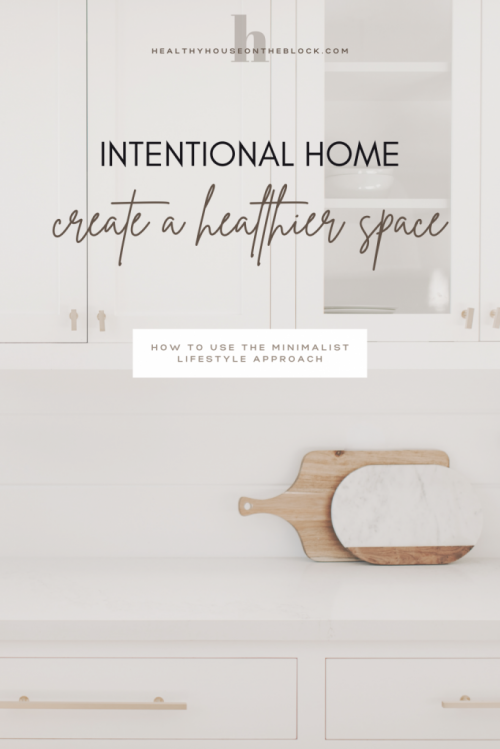
Because we are constantly being exposed to these EMF fields on a regular basis inside our homes, we know that our body is working to protect itself from this stressor. EMF exposure has been linked to childhood leukemia (SOURCE), sleep disturbances and insomnia, headaches and even depression. (STUDY)
In another really in-depth study, they found that the constant electromagnetic radiation in our homes alters the brain function and how the brain is stimulated. (STUDY)
By limiting what we bring into our house and what is used on a regular basis, we can limit some of the exposure that’s happening indoors. By choosing the minimalist lifestyle approach to your healthy home, you can reduce electronic use and instead replace it with a positive lifestyle change.

INTENTIONAL FURNITURE PURCHASES
As we know, the minimalist idea of simplifying can be accomplished on many fronts. Furniture is no exception to this rule. Many furniture pieces contain toxins like formaldehyde, petroleum products, chemical flame retardants and VOCs.
These all play a part in the quality of your indoor air and environment. And these toxins also play a huge role in our health and wellness as we are being constantly exposed to toxins that can increase the risk of cancer, disrupt our healthy hormone production and damage our liver and kidneys (SOURCE)
A healthy home has two steps in this realm: First, the fewer pieces of furniture, the less chemicals and toxins are being brought into our home. And second, being a conscious consumer and really being intentional about our choices in furniture means the pieces we DO bring into our home have fewer toxins.
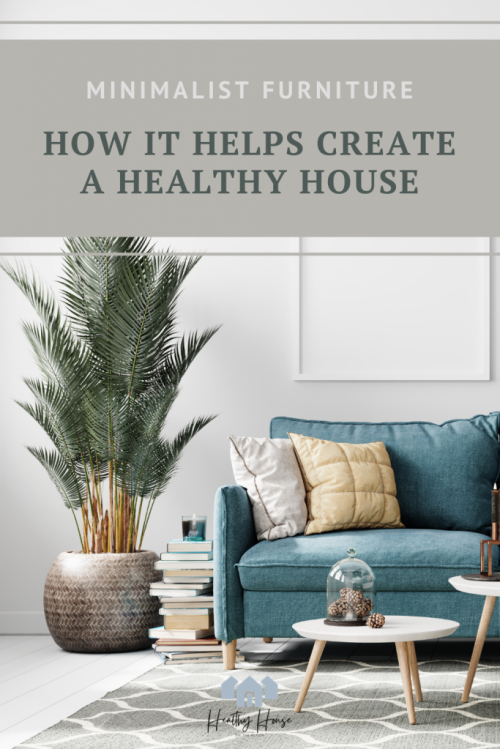
I love the idea of being incredibly intentional about the furniture that you buy — and I especially love having just a few really high quality pieces in your home. We’ve had a few furniture pieces in our home over the past 15 years that have been used in many different ways and moved from room to room depending on what we needed at the time.
Be sure to look into these posts about buying low toxin furniture for your healthy home, even if you’re not going to take the minimalist lifestyle approach:

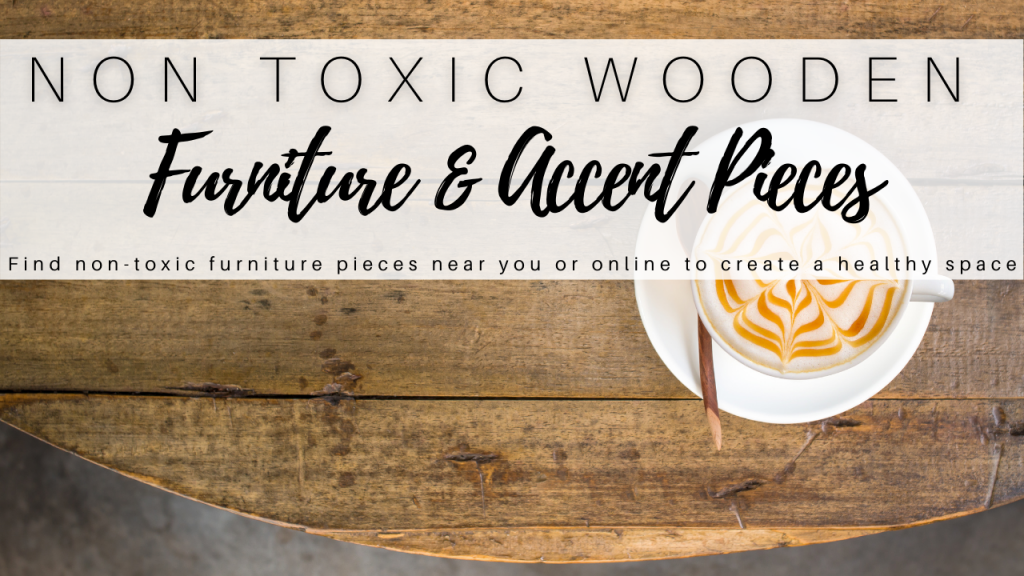
TRUE MINIMALIST LIFESTYLE: PURCHASING LESS
One of the great habits a minimalist lifestyle offers is embracing the idea of making fewer purchases. This is enhanced by choosing to purchase items that are well-made and toxic free. Anything from clothing to textiles, kitchen gadgets to personal care products. The idea is less is better. This will not only help your pocketbook, but in turn your indoor environment, just like all the other habits and lifestyle changes listed here.
By purchasing less you’ll be bringing fewer unknown toxins into your home. Even when a product states it is toxin-free, there is still a risk that it was manufactured in a building where toxic chemicals and materials are used. There’s also a risk of these safe products or household items being shipped with a harmful product or chemical. This means any purchase you make, you could unknowingly bring unhealthy elements into your home.
You can create a healthier home by purchasing less: Reuse what you already have, repurpose items and furniture to be useful again and use up a product before purchasing more.
I absolutely think that pairing a minimalist lifestyle with being really informed about your product and home purchases can help you create a healthy home. This approach can eliminate a lot of stress around what to buy because you’re simply not buying as much to fill up your space. Remember, less is more and moderation is key
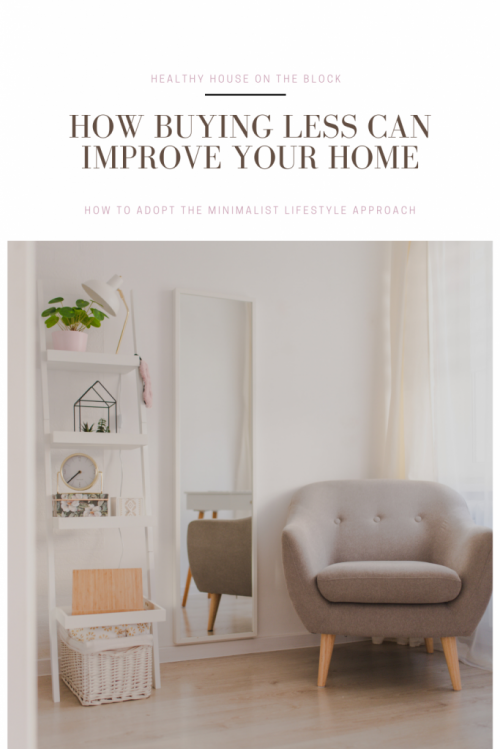
Share this:
- Click to share on Facebook (Opens in new window) Facebook
- Click to share on LinkedIn (Opens in new window) LinkedIn
- Click to share on Reddit (Opens in new window) Reddit
- Click to share on Pinterest (Opens in new window) Pinterest
- Click to print (Opens in new window) Print
- Click to share on X (Opens in new window) X


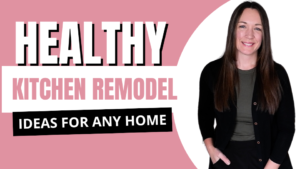

Pingback: Healthy Home Expert: Microbiome Disrupting Chemicals: How to Avoid This New Class of Chemicals